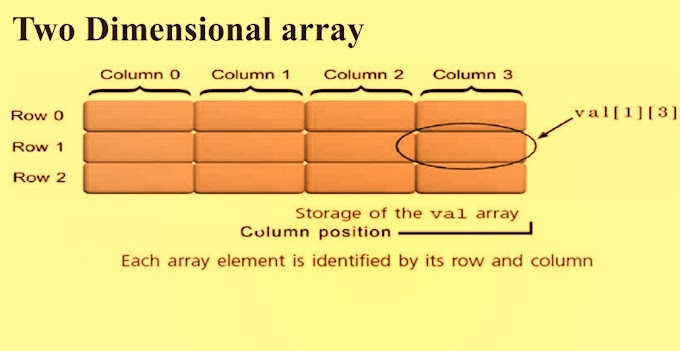Multiple access protocols are required to decrease collision and avoid crosstalk.
When nodes or stations are connected and use a common link, called a multipoint or broadcast link, we need a multiple-access protocol to coordinate access to the link. Many protocols have been devised to handle access to a shared link. All of these protocols belong to a sub layer in the data-link layer called media access control (MAC)
Multiple access protocols can be subdivided as:-
- Random Access Protocol
- Controlled Access
- Channelization
Random Access Protocol
- There is no scheduled time for a station to transmit. Transmission is random among the stations. That is why these methods are called random access.
- No rules specify which station should send next. Stations compete with one another to access the medium.
(a) ALOHA: In this, multiple stations can transmit data at the same time and can hence lead to collision and data being garbled.
- Pure Aloha: The original ALOHA protocol is called pure ALOHA. This is a simple but elegant protocol. The idea is that each station sends a frame whenever it has a frame to send (multiple access). However, since there is only one channel to share, there is the possibility of collision between frames from different stations. When a station sends data it waits for an acknowledgement. If the acknowledgement doesn’t come within the allotted time then the station waits for a random amount of time called back-off time (Tb) and re-sends the data. Since different stations wait for different amount of time, the probability of further collision decreases.
- Slotted ALOHA: Slotted ALOHA was invented to improve the efficiency
of pure ALOHA. In slotted ALOHA we divide the time into slots of Tfr seconds and force the
station to send only at the beginning of the time slot. Because a station is allowed to send only at the beginning of the synchronized time slot,
if a station misses this moment, it must wait until the beginning of the next time slot. This means
that the station which started at the beginning of this slot has already finished sending its frame. There is still the possibility of collision if two stations try to send at the beginning of
the same time slot. However, the vulnerable time is now reduced to one-half, equal to Tjr.
(b) CSMA: Carrier Sense Multiple Access ensures fewer collisions as the station is required to first sense the medium (for idle or busy) before transmitting data. If it is idle then it sends data, otherwise it waits till the channel becomes idle. However there is still chance of collision in CSMA due to propagation delay.
To minimize the chance of collision and, therefore, increase the performance, the CSMA method was developed. The chance of collision can be reduced if a station senses the medium before trying to use it. Carrier sense multiple access (CSMA) requires that each station first listen to the medium (or check the state of the medium) before sending. In other words, CSMA is based on the principle "sense before transmit" or "listen before talk." CSMA can reduce the possibility of collision, but it cannot eliminate it.
CSMA access modes:-
- 1-Persistent: The l-persistent method is simple and straightforward. In this method, after the station finds the line idle, it sends its frame immediately (with probability 1). This method has the highest chance of collision because two or more stations may find the line idle and send their frames immediately. We will see later that Ethernet uses this method.
- Non persistent: In the non persistent method, a station that has a frame to send senses the line. If the line is idle, it sends immediately. If the line is not idle, it waits a random amount of time and then senses the line again. The non persistent approach reduces the chance of collision because it is unlikely that two or more stations will wait the same amount of time and retry to send simultaneously. However, this method reduces the efficiency of the network because the medium remains idle when there may be stations with frames to send.
- P- Persistent: The p-persistent method is used if the channel has time slots with a slot duration equal to or greater than the maximum propagation time. The p-persistent approach combines the advantages of the other two strategies. It reduces the chance of collision and improves efficiency.
- The inter frame space
- The contention window
- Acknowledgments
- Interframe space – First, collisions are avoided by deferring transmission even if the channel is found idle. When an idle channel is found, the station does not send immediately. It waits for a period of time called the inter frame space or IFS. Station waits for medium to become idle and if found idle it does not immediately send data (to avoid collision due to propagation delay) rather it waits for a period of time called Interframe space or IFS. After this time it again checks the medium for being idle. The IFS duration depends on the priority of station.
- Contention Window – It is the amount of time divided into slots. If the sender is ready to send data, it chooses a random number of slots as wait time which doubles every time medium is not found idle. If the medium is found busy it does not restart the entire process, rather it restarts the timer when the channel is found idle again.
- Acknowledgement – The sender re-transmits the data if acknowledgement is not received before time-out.
Controlled Access
- Reservation method
- Token-passing method
- Logical Ring
Channelization
- Frequency Division Multiple Access(FDMA)
- Time Division Multiple Access (TDMA)
- Code Division Multiple Access(CDMA)









0 Comments